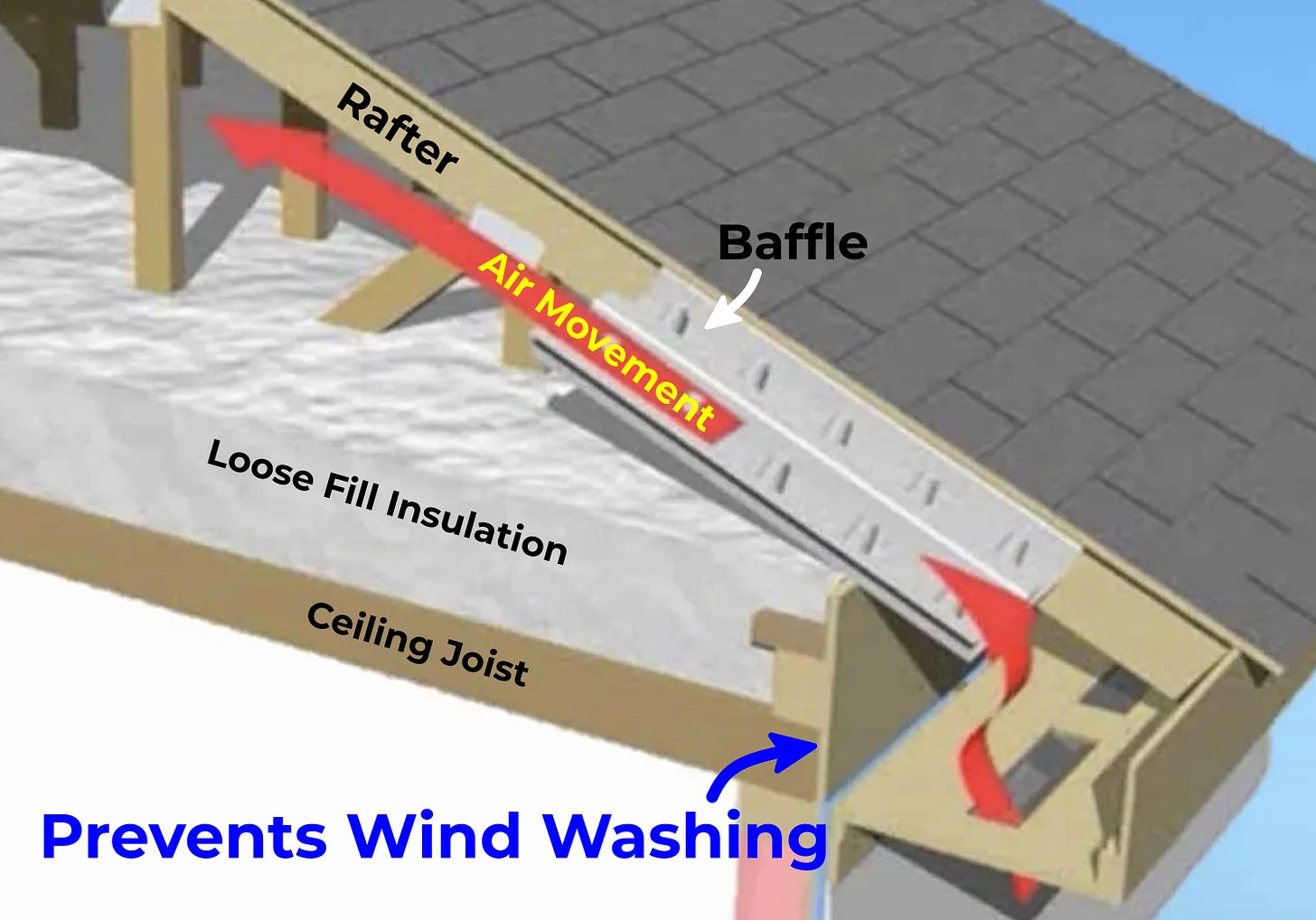Wind Washing Your Attic Insulation
Once displaced, it can't help protect you from hot/cold cycles.
We trust our home's insulation. It's up there, out of sight, out of mind, supposedly doing its job, right? Providing the critical R-value, keeping us toasty in winter and cool in summer.
But what if I told you there's a common, often overlooked phenomenon that turns your perfectly good insulation into a less-than-effective sieve? It's not rot, it's not pests, and it's certainly not a flaw in the insulation itself. It's the subtle, relentless power of wind. Even a 15-mile-per-hour breeze can dislodge loose-fill insulation.
Picture this: wind gusts slip into your attic, not just through gaps, but through intentionally designed vents that allow for airflow. And instead of just passing through, this wind actually moves your insulation, especially that light, fluffy stuff, pushing it away from the eaves, creating voids where heat can escape and cold can creep in. This isn't just a draft; it's a structural energy drain that's more common than you might think.
It's a problem I've diagnosed in countless homes across Mississippi, and one that homeowners rarely suspect. The good news? Smart choices in design, such as using narrow, continuous soffit vents instead of large, gaping ones, or opting for more stable batt insulation, can make a significant difference in wind-washing.
Curious about this invisible culprit? I've broken down everything you need to know: why it's so sneaky to detect, and, most importantly, the straightforward solutions that can dramatically improve your home's comfort and cut those energy bills. Is your insulation truly pulling its weight?




